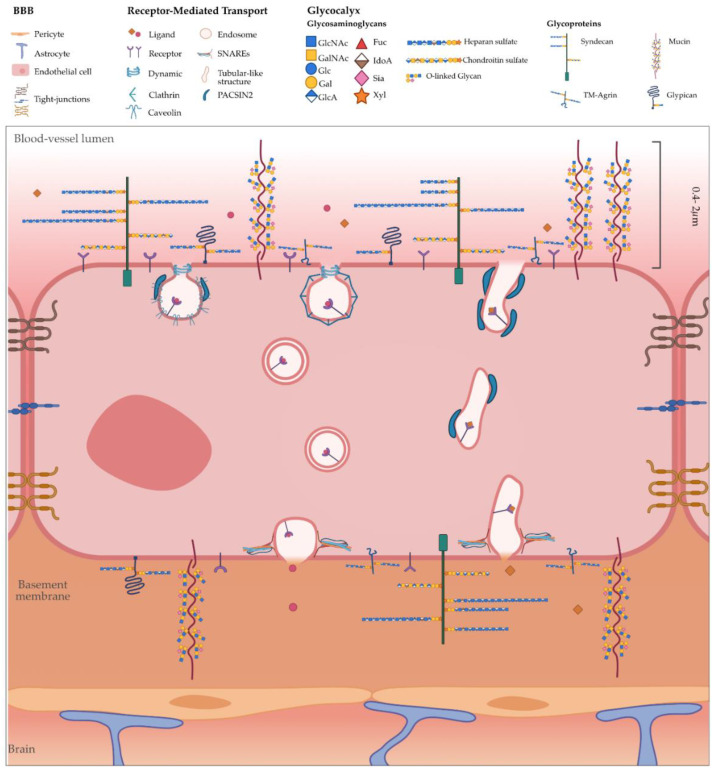Figure 1.
Schematic representation of the glycocalyx (GC) in the blood–brain barrier (BBB) and the mechanisms of transcytosis. The BBB consists of vascular cells (endothelial cells, pericytes and smooth muscle cells), glia (astrocytes, microglia and oligodendrocytes) and neurons. The non-fenestrated brain endothelium is characterised by the presence of tight junctions. Moreover, a layer of the GC covers the luminal/apical surface of the endothelium (0.2–2 µm). The GC brush is highly dynamic with a unique composition of glycoproteins and glycans. Within the glycoproteins, proteoglycans, such as syndecans, glypicans and TM-agrin, contain GAGs (heparan and chondroitin sulphate chains) anchored to the core protein. These proteins may affect the binding of ligands to their receptors and endocytosis. Once the ligand binds to the receptor, the cargo undergoes endocytosis via caveolae- or clathrin-dependent or clathrin-independent mechanisms, with intracellular trafficking mediated by endosomal/lysosomal or a direct route mediated by tubular carriers, and eventually exocytosis.

